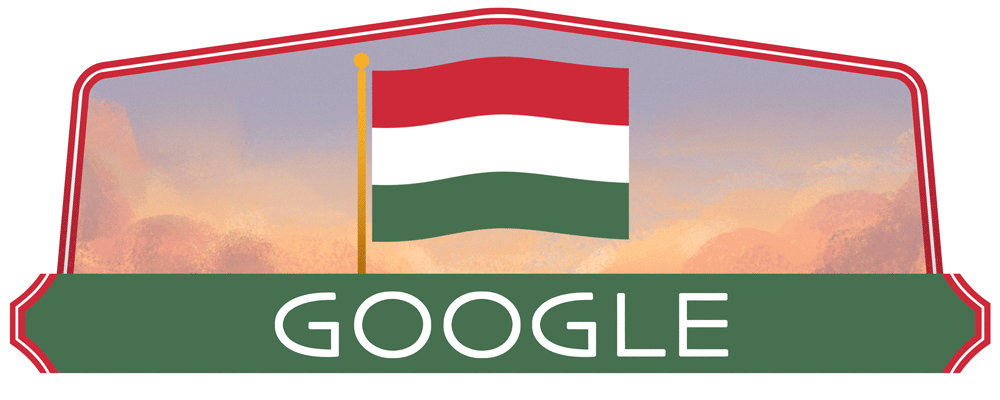Google Doodle for Hungary National Day 2024
In 2024, Google has chosen to honor Hungary National Day with a unique Doodle that brilliantly encapsulates the spirit of the 1848 revolution and Hungary’s vibrant culture. This digital artwork not only serves as a reminder of Hungary’s historical journey towards independence but also as a celebration of its rich cultural heritage.
The Artistic Reflection
The Doodle features a captivating blend of imagery that resonates with Hungary’s national symbols and historic moments from the 1848 revolution. At the center, the Doodle artist has skillfully incorporated elements such as the Hungarian flag, with its symbolic red, white, and green colors, alongside representations of the Chain Bridge, one of Budapest’s most iconic landmarks. The bridge serves not only as a testament to the country’s architectural ingenuity but also as a metaphor for the connection between the past and the present, highlighting the unity and perseverance of the Hungarian people.
Furthermore, the Doodle showcases figures that embody the spirit of the revolution, draped in period attire, holding pens and papers to symbolize the importance of freedom of speech and the press. These figures are surrounded by motifs of the Hungarian flora, like the tulip, which is often associated with national identity and pride.
History of Hungary National Day
The roots of Hungary National Day can be traced back to the revolutionary fervor of March 15, 1848. This date marks the beginning of the Hungarian Revolution against the Habsburg dynasty’s rule, part of the broader wave of revolutions across Europe. The desire for independence, freedom of the press, and the establishment of a parliamentary system were among the key demands driving the Hungarian patriots.
The Spark of Revolution
The revolution was ignited by a group of young intellectuals, inspired by revolutionary movements across Europe, who composed the “12 Points” demanding political reform and greater autonomy for Hungary within the Austrian Empire. The day’s events began with mass gatherings in Pest and Buda (now Budapest), where the crowd, led by prominent figures like Lajos Kossuth and Sándor Petőfi, took to the streets, proclaiming their demands and reciting Petőfi’s poem “Nemzeti dal” (National Song), which became an emblem of the revolution.’
Key Figures and Events
Lajos Kossuth, a lawyer, journalist, and politician, emerged as one of the revolution’s leading figures, advocating for Hungarian independence and democracy. His impassioned speeches and writings inspired many to join the cause. Sándor Petőfi, a national poet and a key revolutionary, played a pivotal role in stirring the national consciousness with his words.
The initial successes of the revolution led to the establishment of a national government in Hungary and the implementation of numerous reforms, aiming for more democratic governance and the abolition of serfdom. However, the revolution faced significant challenges, including military interventions by Austrian and Russian forces, leading to its suppression by August 1849.
Modern-Day Celebrations
Despite its ultimate suppression, the 1848-1849 revolution is remembered as a defining moment in Hungary’s fight for autonomy and democracy. March 15 has since become a symbol of national pride, with celebrations reflecting on the ideals of freedom and independence. The day is marked by official ceremonies, public speeches, and cultural events, showcasing Hungary’s rich historical heritage and its enduring spirit of resilience.
As we move towards the present, the significance of Hungary National Day continues to evolve, serving as a reminder of the country’s journey towards freedom and the ongoing commitment to democracy and national sovereignty.
Global Recognition
Google’s choice to commemorate Hungary National Day with a dedicated Doodle is a nod to the global significance of this day. It not only educates the global community about a pivotal moment in Hungarian history but also celebrates the country’s contributions to the ideals of freedom and national sovereignty. By featuring the Doodle on their homepage, Google facilitates a digital space where millions around the world can engage with Hungary’s cultural and historical legacy.



